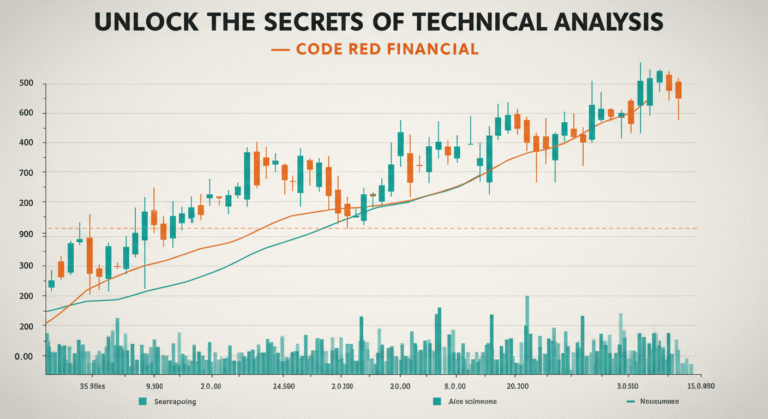
The Fed’s Rate Cut: What It Means for Your Wallet
Hey there, Code Red Financial readers! Today, we’re diving into the latest buzz from the Federal Reserve. Yep, you guessed it – the rate cut. Chairman Powell and his team decided it was time to trim the interest rates by 0.50 basis points. This move has left many economists scratching their heads and Wall Street investors feeling a bit befuddled. The term “recalibration” was tossed around more times than I could count during the press conference. But let’s skip the debate on whether this cut was necessary and focus on what really matters – how this decision impacts your wallet.
Savings: The Good, the Bad, and the Ugly
Let’s start with the basics – your savings. If you’ve got money stashed away in a savings account, you might want to brace yourself. Interest rates on savings accounts are likely to drop, which means your money won’t grow as quickly as it had been. Banks adjust their rates based on the Fed’s decisions, so don’t be surprised if you see a dip in your interest earnings.
But hey, it’s not all doom and gloom. Lower interest rates can also mean lower inflation, which helps maintain the purchasing power of your savings. So, while your savings might not grow as fast, they won’t lose value as quickly either. It’s a bit of a trade-off, but one that can work in your favor if you play your cards right.
Investments: A Mixed Bag
Now, let’s talk investments. The stock market often reacts positively to rate cuts because lower interest rates make borrowing cheaper for companies. This can lead to increased spending and investment, which can boost stock prices. So, if you’re invested in the stock market, you might see some gains.
However, it’s not all sunshine and rainbows. Rate cuts can also signal that the Fed is worried about the economy, which can spook investors. This mixed sentiment can lead to volatility in the market. So, while there might be opportunities for gains, there could also be some rocky times ahead. Diversification is key here – spread your investments across different sectors to mitigate risk.
Mortgages: A Silver Lining
Homeowners and prospective buyers, rejoice! Lower interest rates mean lower mortgage rates. If you already have a mortgage, now might be a great time to refinance and lock in a lower rate. This can save you a significant amount of money over the life of your loan.
For those looking to buy a home, lower rates mean more affordable monthly payments. This could make homeownership more accessible for many people. Just remember, the housing market can be competitive, so be prepared to act quickly if you find a property you love.
Loans: Borrowing Just Got Cheaper
If you have existing loans or are considering taking out a new one, the rate cut is good news for you. Lower interest rates mean lower borrowing costs. This applies to everything from personal loans to auto loans and even credit card interest rates.
However, it’s important to be cautious. Just because borrowing is cheaper doesn’t mean you should take on more debt than you can handle. Make sure you have a solid repayment plan in place before taking advantage of these lower rates.
The Bigger Picture: Economic Implications
Beyond your personal finances, the rate cut has broader economic implications. The Fed’s decision to cut rates is often aimed at stimulating economic growth. By making borrowing cheaper, they hope to encourage spending and investment, which can boost the economy.
However, this move can also be seen as a sign that the Fed is concerned about potential economic slowdowns. It’s a balancing act – they want to support growth without sparking inflation. The term “recalibration” used by Chairman Powell suggests that the Fed is trying to fine-tune their approach to keep the economy on track.
What Should You Do?
So, what should you do in light of this rate cut? Here are a few tips to help you navigate the changes:
Review Your Savings Strategy: Consider diversifying your savings. Look into high-yield savings accounts, certificates of deposit (CDs), or even low-risk investment options to maximize your returns.
Reevaluate Your Investments: Keep an eye on the stock market and be prepared for some volatility. Diversify your portfolio to spread risk and consider consulting with a financial advisor for personalized advice.
Refinance Your Mortgage: If you have a mortgage, now might be a great time to refinance and lock in a lower rate. This can save you money in the long run.
Be Cautious with Borrowing: While lower rates make borrowing cheaper, avoid taking on more debt than you can manage. Have a clear repayment plan in place before taking out new loans.
Stay Informed: Keep up with economic news and Fed announcements. Understanding the broader economic context can help you make informed financial decisions.
Final Thoughts
The Fed’s rate cut is a significant move with wide-reaching implications. While it can be perplexing and even a bit unsettling, understanding how it impacts your personal finances can help you make the most of the situation. Whether it’s adjusting your savings strategy, reevaluating your investments, or refinancing your mortgage, there are steps you can take to navigate these changes effectively.
Remember, the financial landscape is always evolving, and staying informed is key to making smart decisions. Keep an eye on the news, stay engaged with your finances, and don’t hesitate to seek professional advice if needed. Until next time, stay savvy, Code Red Financial readers!







